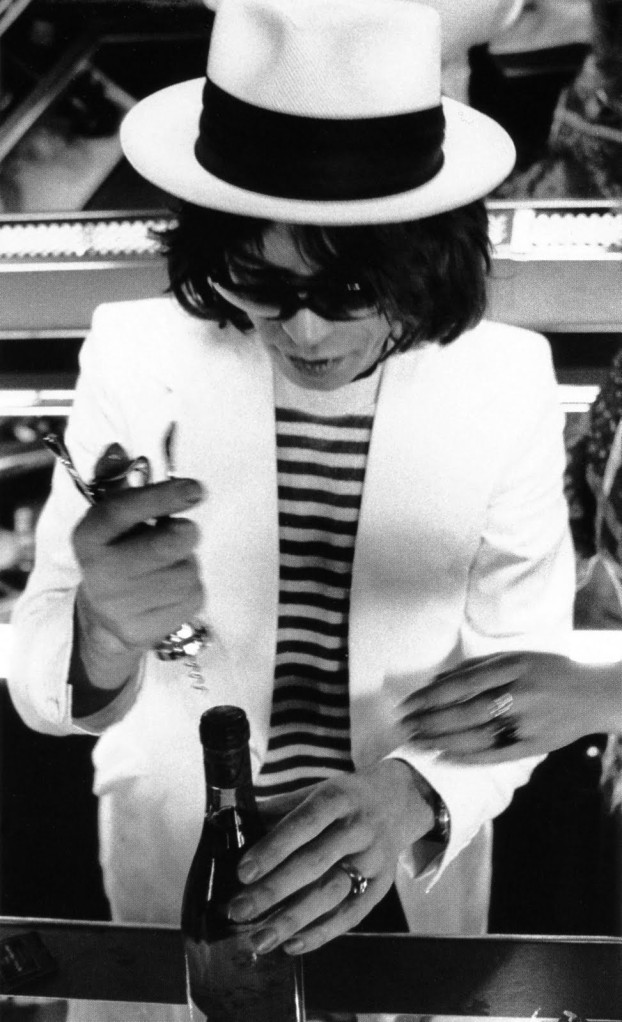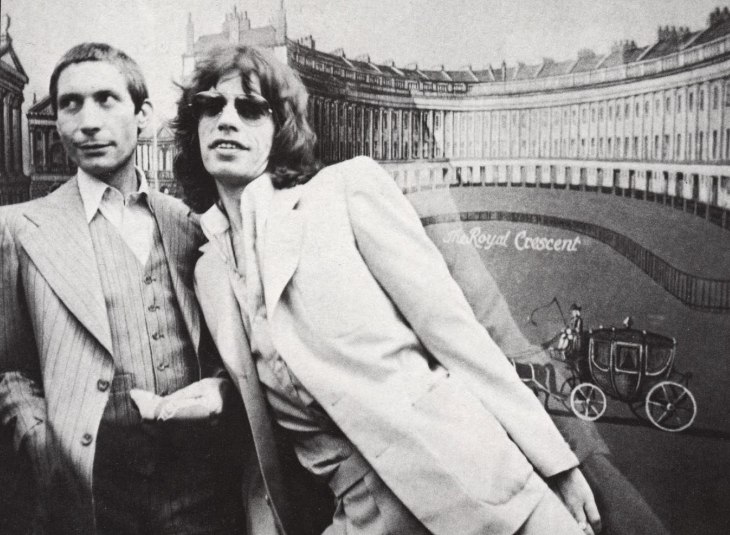 Dark Horse (1974), front cover
Dark Horse (1974), front cover
While the term “dark horse” had long been applied to George Harrison due to his success as a solo artist following The Beatles‘ break-up in 1970, commentators recognise the song as Harrison’s rebuttal to a number of possible detractors: those reviewers who criticized the spiritual content of his 1973 album Living in the Material World; his first wife, Pattie Boyd; and his former band-mates John Lennon and Paul McCartney. Harrison also used the title for that of his record label, and his 1974 North American tour with Ravi Shankar would come to be known as the Dark Horse Tour.
The Tom Wilkes-designed front cover of Dark Horse features a 1956 Liverpool Institute high-school photograph presented inside a lotus flower, behind which a dream-like Himalayan landscape extends to the horizon, where the “deathless Yogi of the Ancient of Days”, Shiv-Goraksha Babaji, sits. While some observers have seen pointed similarities with the Beatles’ iconic Sgt. Pepper’s Lonely Hearts Club Band cover image, Harrison’s choice of artwork reflected his enduring admiration for Terry Gilliam‘s animation on Monty Python’s Flying Circus. In the photo, a thirteen-year-old Harrison is pictured in the centre of the top row, his face tinted blue; school teachers appear dressed in long-sleeve tops bearing a superimposed record-company logo or Om symbol. Wilkes and Harrison disagreed over the size of the Babaji image, which the designer apparently disliked and wanted to reduce in size.
Inside the gatefold cover, around the edges of a tinted photo of Harrison and comedian Peter Sellers walking beside a Friar Park lake, text asks the “Wanderer through this Garden’s ways” to “Be kindly” and refrain from casting “Revengeful stones” if “perchance an Imperfection thou hast found”, the reason being: “The Gardener toiled to make his Garden fair, Most for thy Pleasure.” A speech balloon over the photograph contains the words “Well, Leo! What say we promenade through the park?” This line was taken from the Mel Brooks movie The Producers, a favourite of Sellers and Harrison.
On the back cover, Harrison is pictured sitting on a garden bench, the back timbers of which are apparently carved with his name and that of the album. Similar to Harrison’s attire in the outdoor scenes of the Ding Dong, Ding Dong video clip, Leng refers to his appearance here as resembling the Jethro Tull character Aqualung. Terry Doran‘s photo, given the same orange hue as the one inside the gatefold, was also used on some European picture sleeves for the Ding Dong and Dark Horse singles around this time.
Dark Horse ’s inner sleeve notes were all the work of Harrison himself, written on a plane early in the tour. Along with the first Harrison-album credit for FPSHOT, and the now-familiar “All glories to Sri Krsna” dedication, his purple pen records various in-jokes while listing the many contributing musicians. As well as the confusing inclusion of Boyd and Eric Clapton‘s names (leading to the assumption that they had actually contributed to the track), the song title Bye Bye, Love is juxtaposed with the words Hello Los Angeles, while “OHLIVERE” would appear to be a reference to Harrison’s new lover and future wife, Dark Horse Records secretary Olivia Arias. The latter is also included among the title track’s musician credits – her contribution being “Trinidad Blissed Out”. Under Ding Dong, aside from the appearance of “Ron Would If You Let Him” on guitar, Friar Park’s original owner, Sir Frank Crisp, is credited for providing “Spirit”. Arias’s face, in a photo taken by tour photographer Henry Grossman, appeared on the record’s side-two face label, while a corresponding picture of Harrison appeared on side one.












































 Natalie Wood, 1964
Natalie Wood, 1964




